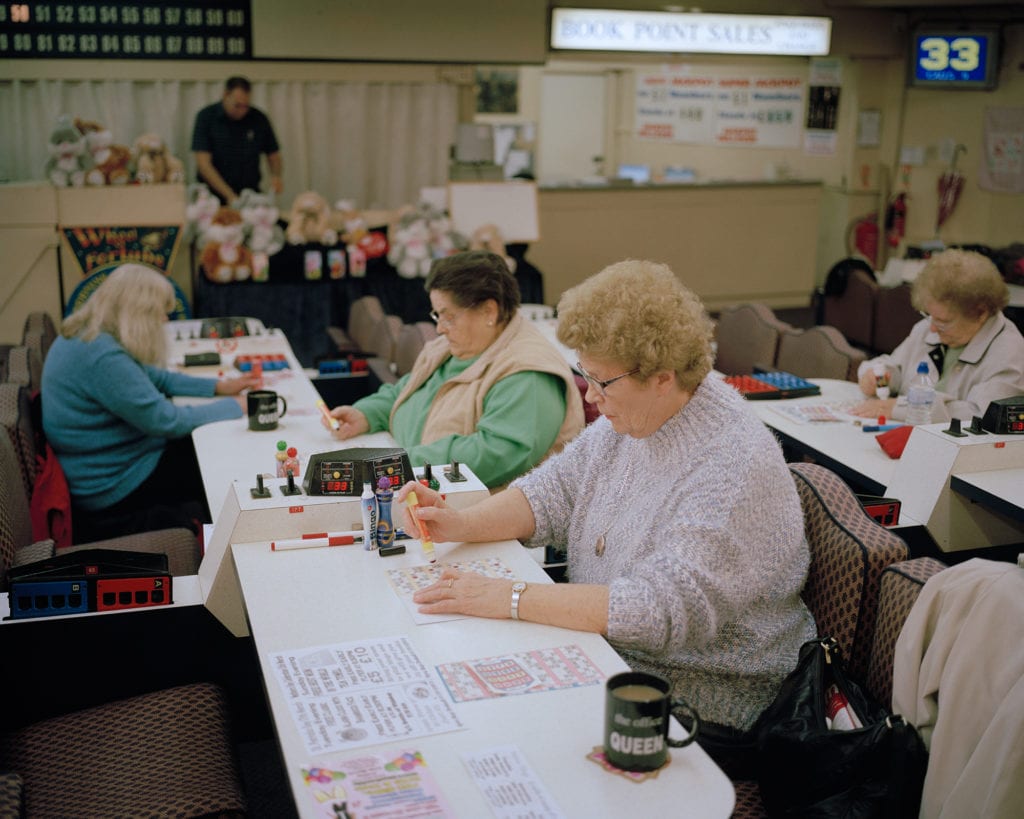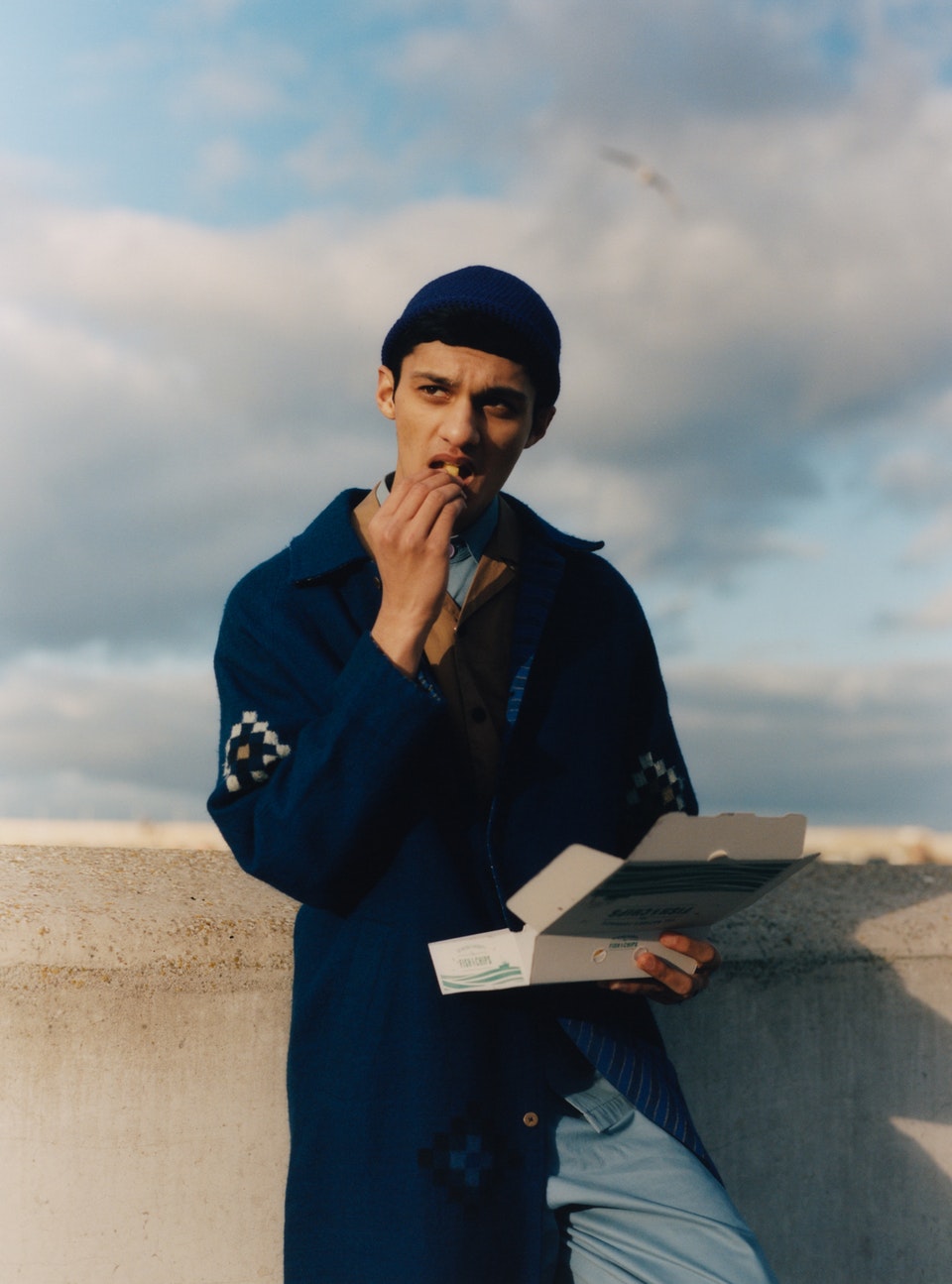Based in Nottingham, UK, David Severn is a documentary and editorial photographer whose practice centres on capturing working class culture and the places associated with it. He has worked on commissions for a wealth of editorial clients, including the Financial Times, The Guardian and Le Monde. Many of his personal projects focus on the relationships between people, their work and the landscape, in both historical and contemporary contexts. He has exhibited internationally and won numerous awards including, most recently, the 2016 Magenta Flash Forward.
Severn’s selected photograph for Portrait of Britain 2017 depicts a singer, Jo Mansfield, performing at Mansfield Woodhouse Ex-Servicemen’s Club. The photograph is part of his series, Thanks Maggie, which documents the landscape and communities around the Nottinghamshire and Derbyshire coalfields three decades since the 1984 to 85 miner’s strike.
Severn’s portrait will be on view across the UK as part of BJP’s Portrait of Britain 2017, in partnership with JCDecaux and Nikon.
How did you create your selected portrait (above) and what is the story behind it?
This portrait is from my long term project, Thanks Maggie, which explores culture and social life in the Nottinghamshire and Derbyshire coalfields, 30 years after the bitter 1984 to 85 miners’ strike. It captures Jo Mansfield, a singer on the Working Men’s Club circuit. Throughout the twentieth century, Working Men’s Clubs and Miners Welfares were thriving entertainment venues at the heart of Britain’s industrial communities. In the 1960s and 70s, big stars such as Tom Jones and Shirley Bassey cut their teeth in these clubs, affirming their place in the world of entertainment.
I have a personal connection to these venues – my father, himself an ex-mineworker, performs in the clubs as an Elvis Presley tribute act. I was keen to photograph in the surviving clubs of Mansfield, the Nottinghamshire mining town where I grew up; I wanted to capture the social activities of the clubs and the faded charm of their interiors.
Today, these much-loved venues are in decline and their audiences are dwindling, yet they continue to provide a familiar meeting place and an affordable night on the tiles for a faithful few.
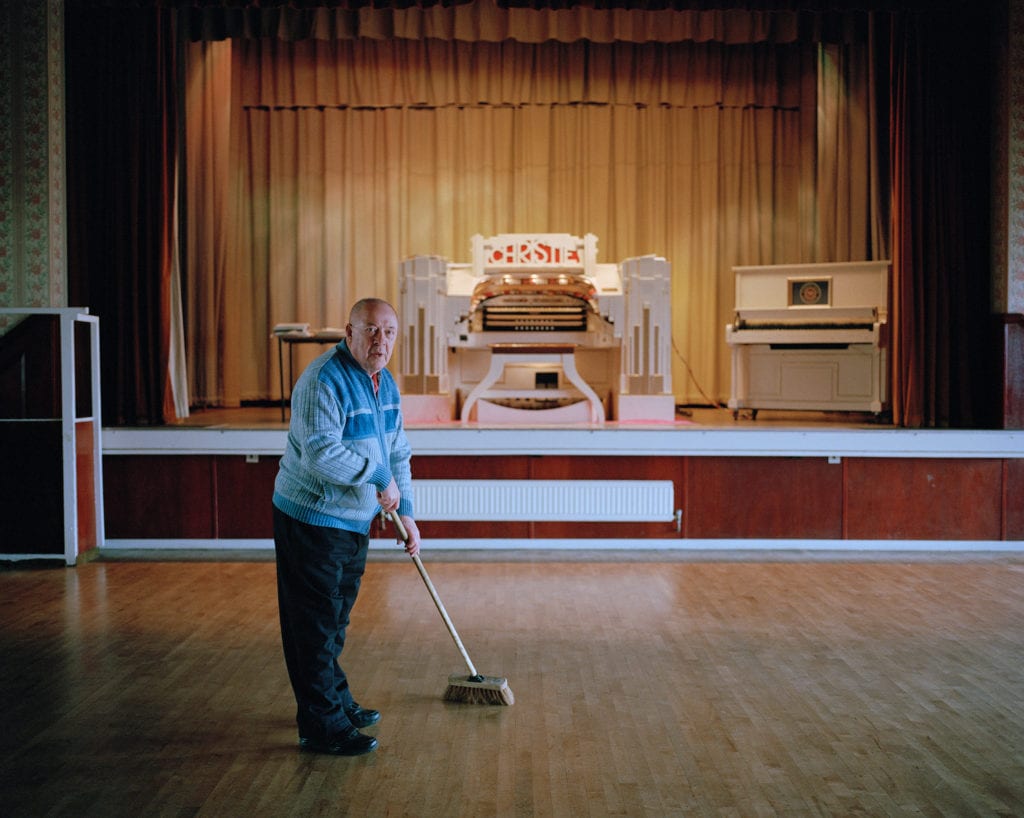
Portrait photography can take you to unexpected places and allow you to meet new and interesting characters. There are no rules. You can begin by photographing people you know and then step out of your comfort zone by asking a stranger if you can take their portrait.
I’m often drawn to photographing people who remind me of characters from growing up in Mansfield, my hometown. A sense of familiarity triggers an emotional connection which often makes for a better portrait. In selecting an image to submit to Portrait of Britain, choose a photograph that represents a part of British culture familiar to you but one that may surprise others and make them ask questions.
What do you think makes for a compelling portrait?
A good portrait relies on a connection between subject and photographer. Often these moments are short lived but can be meaningful and life-affirming. Expression, environment, quality of light and composition all come into play. The aim is to evoke an emotional response in the viewer.
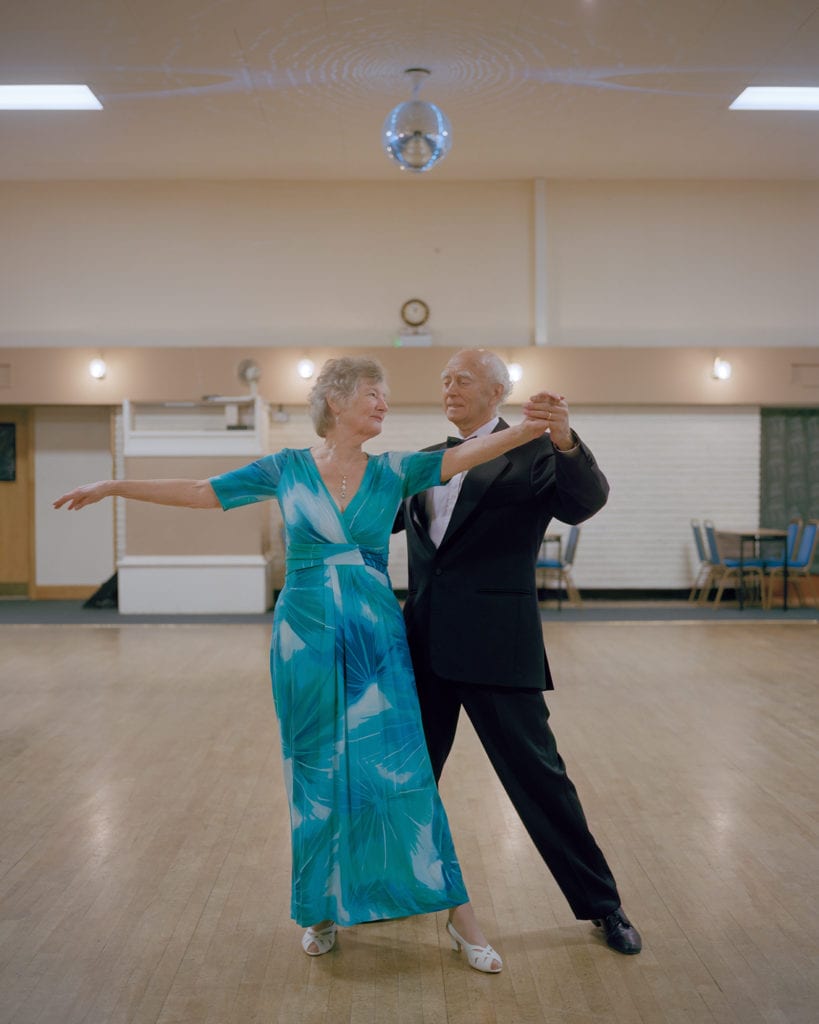
When I was working on my Thanks Maggie series, I was introduced to an ex-miner called Stephen who was a big Rock n’ Roll fan and had an original 1950s Jukebox in his living room. I went to his house to take his portrait and was amazed to find his two-up-two-down terraced house filled to the rafters with Elvis Presley memorabilia. As we were shooting, he suggested playing some tunes on the Jukebox. He hadn’t mentioned it had been used in a huge Chicago nightclub and the volume control was broken. The windows shook as Cliff Richard and The Shadows blasted out of the machine. It was crazy!
What do you think about the Portrait of Britain project?
It’s great – advertising is everywhere and can sometimes seem overwhelming, so it’s particularly striking when that space is co-opted for an art exhibition. Photography is a truly democratic medium and displaying it in this way emphasises that.
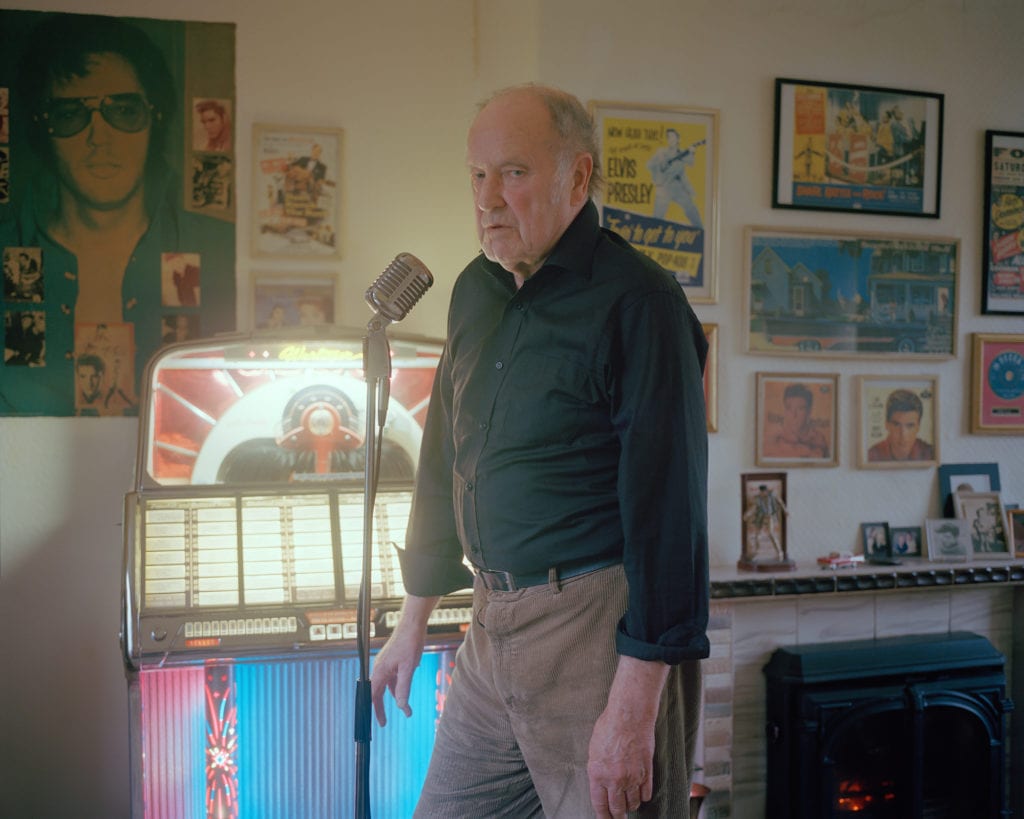
If you missed the chance to enter this year’s Portrait of Britain, make sure to submit to the International Photography Awards 2018 here.
